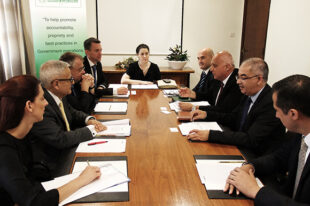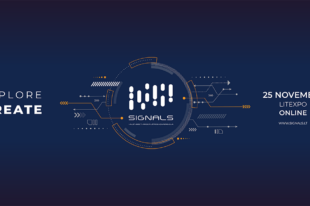ISSAI 5600 Review in Final Stage

by Karol Mitrík, President, SAI of Slovakia
The origins of the ISSAI 5600–Peer Review Guide and its Checklist stem from March 2006, when the INTOSAI Capacity Building Committee (CBC) held its inaugural meeting in London, England. The SAI of Germany became the Chair to the INTOSAI CBC´s Sub-Committee 3 (SC 3), which was established to promote best practices and quality assurance through voluntary peer reviews. The SAI of Germany held the chairmanship until 2013, when the SAI of Slovakia officially took over at the XXI INCOSAI in Beijing, China.
Alongside the chair changeover, a revised ISSAI 5600 was being prepared in line with the SC 3 decision taken in 2012 at its meeting in Luxembourg to present updated standards at INCOSAI 2016. The work on documents that later became ISSAI 5600 and Checklist began with seven SAIs, and as the revision is nearing its end, there are 14 members of SC 3: Bangladesh (vice-chair), Sweden, Germany, Austria, Estonia, Croatia, Poland, Morocco, Peru, USA, Hungary, Indonesia and Slovakia (chair). The European Court of Auditors is another valuable and very active member.
The INTOSAI Guide for Peer Reviews serves as a source of good practice and guidance to SAIs on planning, implementing and evaluating peer reviews. Due to the broad differences in SAI mandates, context and activities, ISSAI 5600 was constructed solely as a guide, thus it may not cover all situations, types and areas of peer review. However, it attempts to establish a common understanding on the purpose and nature of peer reviews, notably the principles involved, as well as the options that may be followed by the reviewed SAI and peer review team.
The revised ISSAI 5600 Guide content has undergone significant change to reflect the growing knowledge on the topic within the INTOSAI community in addition to feedback and suggestions received from INTOSAI members since the standard adoption in 2010 at XX INCOSAI. Its structure also recorded notable amendments, and the original six chapters have been expanded into nine.
The Peer Review Checklist (included as an appendix to the original ISSAI 5600) has been further developed and renamed “Peer Review Areas and Questions” (PRAQ). The PRAQ was based primarily on the principles and guidelines defined in the ISSAI framework, and it provides a list of possible areas to be considered for peer review and questions that might be asked.
The standard and its appendix, in line with the INTOSAI due process, had an exposure period (approved by the CBC Steering Committee meeting in Stockholm, Sweden, September 2015) of roughly four and half months beginning October 2015 and concluding mid-February 2016. Thirty SAIs contributed nearly 140 comments and suggestions resulting in 98 valuable amendments adopted.
At the beginning of June 2016, ISSAI 5600 and its appendix PRAQ were sent to the SAIs that volunteered to provide translations into the INTOSAI official languages—Rekenhof-Cour des Comptes of Belgium, Bundesrechnungshof of Germany, State Audit Bureau of Kuwait and Tribunal de Cuentas of Spain.
The endorsement version of ISSAI 5600 and its appendix PRAQ drafts, along with a comprehensive table showing the comments and responses provided, can be found at www.issai.org. INCOSAI XXII brings the cycle of intense work over the past three years to a close as the standard is tabled for approval.
Any INCOSAI participants interested in peer review topics (from any angle) should reach out to the Sub-Committee on Peer Review Slovak representatives at the Congress in Abu Dhabi this December.





